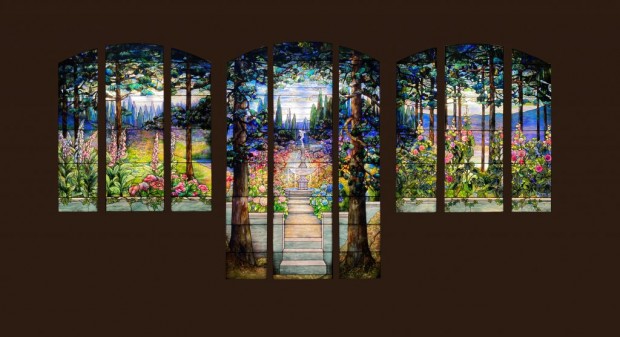
NEW YORK - The Tiffany three-part stained-window piece designed by Agnes Northrop created in 1912 and to be displayed in New York's The Metropolitan Museum of Art's American Wing in 2024.
The Metropolitan Museum of Art in New York announced last Dec. 5 that it had acquired a historic and exceptionally designed three-part stained glass window by Tiffany. Dubbed "Garden Landscape" (1912), was the brainchild of Agnes Northrop who designed the piece as part of a commission from philanthropist and coal industry giant, Sarah B. Cochran.
This monumental glasswork is planned to be installed at the Charles Engelhard Court in November of 2024, to celebrate the 100th anniversary of the museum's American Wing. Opened back in 1924, the wing was built to house incredible examples of the country's domestic art created from the 1700s to early-1900s.
The History of Tiffany's 'Garden Landscape' Stained-Glass Masterpiece
The window set was originally made for Cochran's "Lindel Hall" estate in Pennsylvania, and all the parts surrounding its conception, from the ideation to execution, were done by women which was rare for a work created in the 1910s.
Northrop, who was one of Tiffany & Co.'s top female designers, started working for the design house in the 1880s and eventually led a group of female designers within the company called the "Tiffany Girls." The design itself was made in the image of the "Linden Hall" property's garden and was crafted using an iridescent glass material developed by Tiffany, the Favrile Glass.
Within Tiffany & Co., Northrop was the first one to create landscape-based stained glass designs, following the creative principles set by the American Impressionists that preceded her regarding the relationship between the refraction of light and the glass' opalescent nature.
The window piece was put together at the studios of Louis Comfort Tiffany, son of the design house's founder, Charles Lewis Tiffany. Louis also became the company's inaugural design director in 1902, directly after his father passed. Before the finished piece was sent to Cochran, it was publicly displayed at a Tiffany flagship showroom in New York.
As reported in The Met's official press release, museum director and CEO Max Hollein said: "This stunning work of art is an extraordinary example of the transformational creativity of Agnes Northrop and Tiffany Studios."
"Magnificent in concept and execution and more than grand in size, it deepens the American Wing's Tiffany holdings and will enhance the already stunning Engelhard Court with a powerful, immersive viewing experience," he added.
Read More: The Louvre Raises Its Ticket Prices by 29 Percent Ahead of the 2024 Olympics Hosted in Paris



